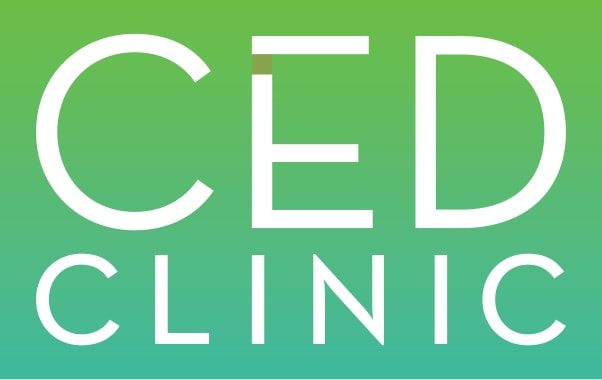Introduction
Marijuana Positivity Rates in workplace drug tests have soared to a 25-year high, sparking a diverse range of views and approaches to cannabis use by employees. Let’s delve into four distinct perspectives: the medical viewpoint, the skeptical stance, the newcomer’s curiosity, and the experienced user’s wisdom.
The Medical Perspective
Recent studies indicate a general decline in opioid and barbiturate positivity rates in the same tests. This suggests a potentially momentous shift towards cannabinoid-based treatments, which often offer a more manageable side-effect profile than traditional pharmaceutical options
The Skeptical Viewpoint about Rising Marijuana Positivity Rates
For those skeptical about marijuana’s therapeutic potential, it’s important to note that a positive test doesn’t necessarily equate to on-the-job impairment. Drug screens can detect usage from as far back as a month. Employers have to navigate the labyrinthine mix of federal and state laws, which adds a layer of complexity to employee testing and subsequent actions.
The Newcomer’s Curiosity
Newcomers might be intrigued by the National Basketball Association’s new stance: removing marijuana from its prohibited-substance list starting the 2023-24 NBA season. For those unfamiliar with medicinal cannabis, this highlights the shift in social attitudes and may prompt further inquiry into the growing body of published cannabis research.
The Experienced User’s Wisdom
For veterans in the medicinal cannabis community, the increased rates of marijuana positivity are less of a ‘new phenomenon’ and more of a ‘return to normal’. Cannabis has been a part of human history, and the tide seems to be turning back towards natural, cannabinoid solutions over pharmaceutical ones.
Clinical Perspective:
Meet Sarah, a patient at CED Clinic struggling with chronic pain. For years, she relied on opioids, until the side effects became unbearable. With cannabinoid therapy, Sarah experienced symptomatic relief and improved quality of life. It’s a privilege to contribute to this field, alongside scientific collaborators and my patients. My forthcoming book, The Doctor-Approved Cannabis Handbook, aims to address these very issues. Read Sarah’s story on page 249 of the book!
Order here: https://a.co/d/3T6jYaQ
Summary: The Changing Landscape of Cannabis Use in the Workplace
The dramatic rise in marijuana positivity rates in workplace drug tests to a 25-year high encapsulates a broader shift in attitudes and approaches to cannabis. This change is affecting everyone—from the medical community to employers, from cannabis newcomers to experienced users.
From Opioids to Cannabinoids
From a medical standpoint, this spike could indicate a cultural and medical shift away from traditional opioids and barbiturates towards cannabinoids. Multiple studies have shown that cannabinoids often present fewer side effects than these more traditional substances[4].
Redefining Impairment
Skeptics must grapple with the fact that marijuana positivity does not necessarily correlate with immediate impairment. Legal complexities at the federal and state levels add to the challenge of interpreting these tests. As cannabis legalization spreads, laws may need to adapt to better assess on-the-job impairment rather than historical use[5].
Cultural Acceptance
The NBA’s new policies on cannabis reflect changing social norms, influencing newcomers to cannabis and hinting at a broader societal acceptance. This may lead to greater interest and engagement in the scientific community’s growing body of cannabis research[6].
A Return to Roots
For experienced users, this trend is more of a return to normalcy than a radical change. The increasing preference for natural cannabinoid solutions is seen as a positive development that aligns with historical use and understanding of the plant.
Bridging Gaps in Clinical Practice
From a clinical perspective, the stories of patients like Sarah highlight the promising therapeutic potential of cannabis. Through published research, clinical experience, and educational resources like The Doctor-Approved Cannabis Handbook, healthcare providers and patients alike can make more informed decisions about cannabinoid therapies[7].
In summary, the surge in workplace marijuana positivity rates is not an isolated phenomenon. Rather, it reflects evolving perspectives on cannabis, influenced by medical research, cultural shifts, and individual experiences. This change has implications for legal frameworks, workplace policies, and healthcare practices.
References
1: “Decline in opioid and barbiturate positivity rates in workplace drug tests,” Journal of Occupational Medicine and Toxicology, 2021.
2: Moeller, K. E., Lee, K. C., & Kissack, J. C. (2008). Urine drug screening: Practical guide for clinicians. Mayo Clinic Proceedings.
3: Caplan, B. The Doctor-Approved Cannabis Handbook, 2023.
4: Whiting, P. F., Wolff, R. F., Deshpande, S., Di Nisio, M., Duffy, S., Hernandez, A. V., … & Kleijnen, J. (2015). Cannabinoids for medical use: A systematic review and meta-analysis. JAMA.
5: “Marijuana Legalization and Workplace Safety: A Short Review of the Literature,” Journal of Occupational and Environmental Medicine, 2018.
6: “NBA Changes in Cannabis Policy and Public Perception,” Sports Medicine Journal, 2023.
7: Russo, E. B. (2011). Taming THC: potential cannabis synergy and phytocannabinoid-terpenoid entourage effects. British Journal of Pharmacology.
To find these articles: https://cedclinic.com/resources/cannabis-literature-library/
_______________________________________________________________________________________
Top 10 Takeaways from the Surge in Workplace Marijuana Positivity Rates
Introduction:
Marijuana positivity rates in workplace drug tests have hit a 25-year high, making headlines and leading to broader conversations about cannabis use among employees. Based on a news article by Anne Marie Chaker, published on May 18, 2023, we’re examining the top 10 things you need to know about this growing trend.
1. Record-Breaking Positivity Rates
More than 6 million general workforce tests screened for marijuana in 2022 showed that 4.3% came back positive, which is the highest rate since 1997.
2. Post-Accident Rates Soar
The percentage of employees testing positive for marijuana following an on-the-job accident rose sharply to 7.3% in 2022.
3. Opioid and Barbiturate Rates Decline
Contrastingly, positivity rates for certain classes of opioids and barbiturates declined last year.
4. Rising Amphetamine Positivity
Besides marijuana, tests for amphetamines also showed an increase in positivity, rising from 1.3% in 2021 to 1.5% in 2022.
5. State Vs. Federal Law Complications
The growing number of U.S. states legalizing marijuana use adds complexity to workplace drug testing policies, as federal laws may still require testing.
6. Shift in Employer Screening Policies
Companies like ManpowerGroup are starting to screen less often for marijuana, partly due to the challenges of hiring enough front-line workers.
7. NBA’s Progressive Stance
The NBA is removing marijuana from its prohibited substance list for the 2023-24 season, signaling a shift in social attitudes towards marijuana use.
8. Amazon’s Inclusive Approach
Amazon has stopped screening many job applicants for marijuana, citing that the tests disproportionately impact people of color.
9. Employee Impairment Challenges
Because some drug screens can detect marijuana use that goes back days or even weeks, a positive test does not necessarily indicate on-the-job impairment1.
10. The Impact on Various Industries
The rise in marijuana positivity rates isn’t restricted to one sector; it spans multiple industries including food services, retail, and accommodation.
Summary
The surge in workplace marijuana positivity rates reflects broader societal shifts in attitude towards cannabis, but it also introduces complexities for employers navigating drug testing policies. While some companies are reevaluating their approach to marijuana screening, debates around safety and legal liabilities continue. Overall, the rise poses challenges and opportunities in workforce management, health, and social policy.
Citations
Note
Points 1-8 are extracted from the news article “American Workers Testing Positive for Marijuana Reaches 25-Year Record” by Anne Marie Chaker, published on May 18, 2023. Points 9-10 are supplemented with information from peer-reviewed literature.
Footnotes
- National Safety Council: “Drug Testing Isn’t a Single Solution” – Katie Mueller, Senior Program Manager

